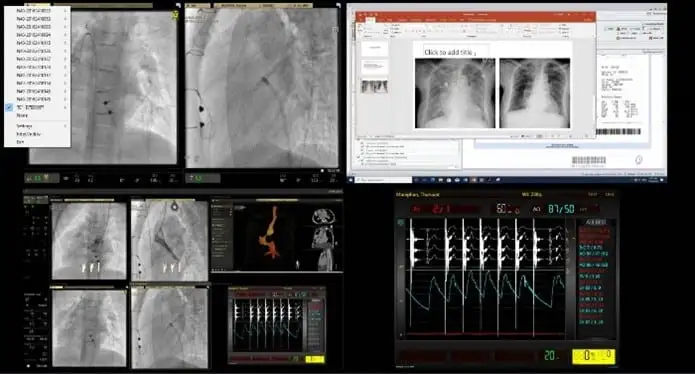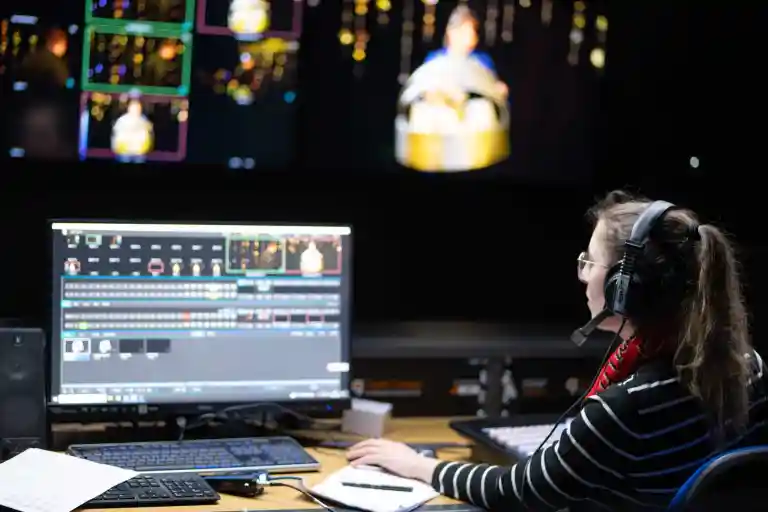Whether it’s at school, work, sports or at houses of worship, the world we live in today is very different than it was just two years ago. It’s become distributed. Today, more than ever, people have choices whether to attend events or gatherings in person or stay at home, as most now offer some form of live streaming or video conferencing to help maintain engagement. Additionally, the quality bar of these productions has improved significantly in recent years. Engaging online events require more involved multi-source production, and a single camera and microphone, delivered to platforms like YouTube, Vimeo, Zoom or Teams alone are simply insufficient for larger, more complex event productions.
Although some Houses of Worship (HoW) may operate on a limited budget, the technology they purchase to produce better than broadcast live streams doesn’t need to be expensive. Church and temple leadership recognize the value in live streaming and their production teams recognize the value of technology workflows that are reliable and simple to implement. That technology, however, must be easy for anyone to use, as most HoW AV teams are volunteers with production skills at all levels of experience.
The dramatically increased availability of IP-based video production, with protocols like NDI, in recent years has allowed many HoWs to switch and upgrade their technology. This transition has made a profound effect on media programs across markets, while bringing significant flexibility in how churches design and operate their AV systems. In-venue projection, multi-channel audio, and even talent tracking have also lent a professional quality to service productions.

DOWNLOAD A COPY OF THE ARTICLE
Simple to operate and scale
With cost-effective IP networking in place, HoWs of all sizes can now simultaneously serve the venue AV, overflow areas in worship venues and reach congregants at home and other venues through streaming and conferencing across the public internet. They can easily enable on-demand viewing to grow congregations anywhere in the world by leveraging social media and video platforms from YouTube to Instagram. By expanding delivery to these channels, congregations expand its message to engage existing and attract new members.
HoWs now have easy access to a variety of IP-enabled equipment in today’s market to make high-quality productions. Because the equipment connects via standard Ethernet cables, this equipment is simple to integrate, adapt and is more affordable than rigid, traditional audio and video infrastructure.
The heart of any broadcast-grade production is the live video production system, or at its simplest a switcher. Every large production requires a switcher, but they are not all created equal and will range in features, power, performance, ease of operation and price.
Software-defined production systems are the single most important advancement to create professional quality productions at a compelling price point. There are a number of all-in-one, NDI-enabled production systems on the market, which provide a full suite of media production capabilities. Even at the entry level, such as our TriCaster Mini X, production systems that can bring in multiple feeds from the house network, switch seamlessly and dynamically between sources, even present multiple sources on screen at once, whilst providing clear audio control. All simply delivered and streamed to your online congregations.
IP-native software is a critical component to any live production. As more people with less AV experience get involved in live stream production, they will often wish to utilized computers and devices they already have with them. In response AV manufacturers are designing their applications to enable all devices and price points. Today, modern IP-compatible sources are plug-and-play, and production software systems automatically know when new equipment when connected to the network, allowing producers to operate them straight away, even remotely, from within the system.
Together with IP-enabled cameras, monitors, teleprompters, and tally lights, the entire network suite helps deliver critical messages to congregations. It is also important to note that many production systems have added software tools such as built-in graphics creation tools; features that coordinate live interviews with remotely located guests; even protected storage with integrated media asset management making searching and organizing content simple. There is also integration with 4K quality cameras – even for those on mobile phones and tablets.
Crucially, the move to a networked solution does not need to be wholesale “forklift” upgrade. There are many devices on the market that allow users to utilize existing Video and Audio equipment you already have, with networks and software systems – making it easy to transition and add more video and audio sources over time as needs evolve.
Keeping worshipers engaged
The South Carolina Synod of the Evangelical Lutheran Church in America (ELCA) wanted their church to be adaptive, relevant, and able to deliver its message to a demographic that lives much of its life online. The church now offers live stream services using an integrated production system, which saves the church both effort and money.
HoWs like South Carolina Synod use graphics and videos to help tell the stories each week to engage with patrons tuning in remotely. When used in conjunction with well-programmed lighting, networked audio sources, and video, this next-generation of AV system helps create an immersive experience that takes the congregation on a journey from passive observer to active participant.
Distributing services online has also become a critical way to keep its congregation together despite being physically apart. To improve online presentations, its new production system included audio and video tools, various chroma key backdrops, and the ability to use built-in virtual sets, or add customized virtual sets, for better live multi-camera productions.
It also began to leverage the technology to add new components of its presentations, including adding up to four live video calls from global remote guests at one time. This addition helped to strengthen engagement while creating production quality that rivals programming its congregants see daily on network TV channels.
“Working with a small budget can make it seem like your capabilities are limited, but with the right equipment, and some creative thinking, you can get a high quality, professional result,”* said Director of Communication of the South Carolina Synod, Neal Fischer.
Making Digital Worship More Engaging, Approachable
Using the latest better-than-broadcast, software-defined, IP centric production systems, houses of worship can have a lasting, positive influence on congregations of all sizes. Even adding multiple cameras to a HoW live production setup is now easier thanks to capabilities of a standard IP network. Any staff member can connect them with a single Ethernet cable, enabling the capture and delivery of up to 4K video, with crystal clear audio, and control, within seconds.
IP Video technology also does more than expand services— it brings new life to a services message and creates more memorable experiences for digital worshippers. There’s no congregation too big or small to benefit from networked production technology. While some aspects of the digital age can seem daunting, installing a user-friendly, trusted video production system can help a congregation reach and maintain engagement with wider audiences in a more sophisticated way.







